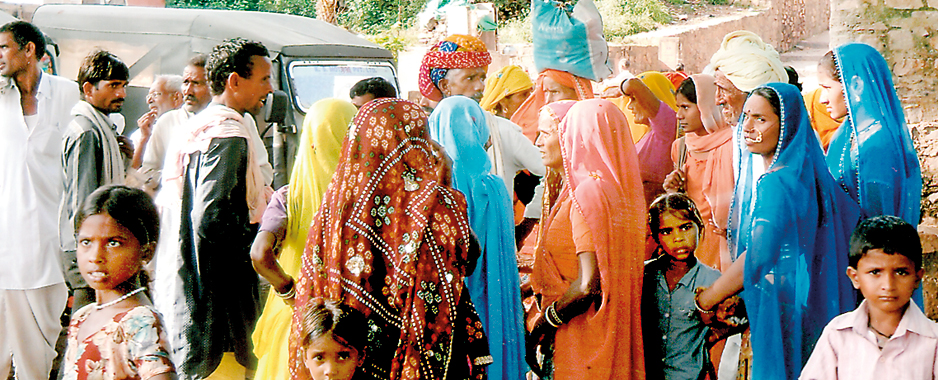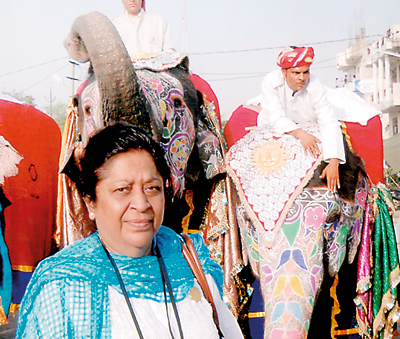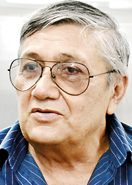Where beauty meets spirituality
Though a desert, which lies between Asia and India, Rajasthan is one of the world’s most colourful regions with a heritage that spans the historic and the chivalric, blending it with the artistic and the aesthetic. The Rajput rulers were not only brave warriors but also offered patronage to the arts.
This article is a tribute not only to their kingdoms and the culture they developed but also to the ‘Joie de vivre’ which marks the people and their lifestyle even today. Rajasthani cultural and spiritual traditions are around 5000 years old and Rajasthan is full of ravaged cities, forts, palaces, sacred shrines, forests and deserts, legends and love stories.

Riot of colour: Crowded city streets and people proud of their heritage
Thanks to my friends Sumithra, Roshini and Lalani, who first thought of this trip to Rajasthan, my husband and I joined Qwest Destinations and had an experience of a lifetime. Twelve of us arrived in New Delhi and stayed at the Crown Plaza Hotel. We then travelled to Safdarjung Railway station to board the legendary ‘Palace on Wheels’. After a traditional welcome, the long train took off into the night. This train journey was first started 30 years ago, and some members of the original staff are still employed.
The train is decorated like in the times of the Raj. The hospitality and the cuisine are of the highest quality. Onboard faculties include two restaurants, a bar to enjoy cocktails, a spa, and a private lounge for every saloon car. Every saloon has four double cabins with attached toilets, a captain and an attendant who provide 24-hour service. The décor and furnishings, including the staff uniforms, are traditionally Rajasthani.
Our first stop was Jaipur- the capital of Rajasthan where we were welcomed by painted elephants and pretty girls. One of them put a bright red dot on my forehead and said ‘Om’; the other girl garlanded me with chrome yellow marigolds and said ‘Namaste’. The air was heavy with floral scents. It was a traditional welcome complete with Indian music. After sightseeing in Jaipur (the Pink City) we had lunch at the city palace and then it was back to the train with dinner onboard to travel by night to Sawai Madhapur and Ranthambhor National Park. The very lush park with dense forests of flowering trees- home of the tiger and set amidst an old fort- was very picturesque. Then it was on to the fort in Chittaurgarh, said to symbolise the courage and honour of the Rajputs.
The next stop was Udaipur where we saw many lakes and palaces. Everywhere I looked I saw beauty, a unique mosaic of colours, aromas, tastes, textures and humanity and the juxtaposition of ancient and modern. I was glad that it inspired my quest for adventure while awakening my senses.
Amidst all this train/coach travel, we never lost a moment to indulge ourselves in that great healer-laughter. Ranjit and some others kept us in fits of laughter with their jokes-what fun!
And in between sightseeing, we often enjoyed the joys of shopping and dressed up in these clothes and jewels we bought in the shops- for dinner at the ‘Maharajah Restaurant’ to be served in style, with tasty five course meals cooked by chefs on the train itself.

Inspired: Marie Alles Fernando
The next morning we arrived at Udaipur city itself, built around beautiful lakes. The dream-like ‘Jag Niwas’ (Lake Palace) and ‘Jag Mandir’ appeared to rise from Lake Pichhola.
In ‘Jaiselmer’ which lies in the heart of the Thar Desert, we saw many latticed havelis’ or mansions, fine examples of the stone carvers’ skills.
A camel ride to the desert close to the Pakistan border that afternoon in the scorching heat was another ‘fun’ experience.
While driving around Jodhpur the next morning, we saw handsome men in coloured turbans, the women adorned in magnificent ‘meenakari’ or enamelled jewellery, old men with white beards in linen tunics, women with multitudes of children going to do the washing, smiling and relaxed. All the observations taught me that in this world colour and chaos can coexist without things falling apart. That one could find happiness without wealth, and though poverty was devastating, these descendents of the Indus Valley civilisation are full of joy, hope and spirituality.
The next stops were Bhatatpur and finally Agra. In the former, we had a very early morning ride in rickshaws to the Keoladeo Gahna National bird park. I never felt so close to God- so beautiful was this place in the morning sun and silence. Agra is world famous for the Taj Mahal and rose to prominence during the reign of the Moghul emperor Akbar.
This monument by Shah Jahan, for his love for Mumtaz Mahal, is a dream in marble. Here I discovered what light is in this part of the world- it makes the colourful costumes glow and come magically alive- one has to experience it. Colour is present everywhere- on a scale not seen anywhere else.
It explodes everywhere and creates optimism and a faith in beauty. There is colour in the way they dress, speak; sing and decorate their dwellings. These are people with a history of 5,000 years. They are a religious people. Life is hard for the poor but they face it with pride and dignity. This pride is kept alive in their folklore, folk music, in the fairs and festivals and in their crafts and paintings. India continues to inspire my palette and paintings. I am grateful.
We finally reached Delhi and said a sad farewell to the train and our special attendants, Rajiv and Lakshman who had served us well, and emplaned for Colombo and home.
This experience was magic, lingering on the senses like the scent of a rare desert flower.
Follow @timesonlinelk
comments powered by Disqus
























